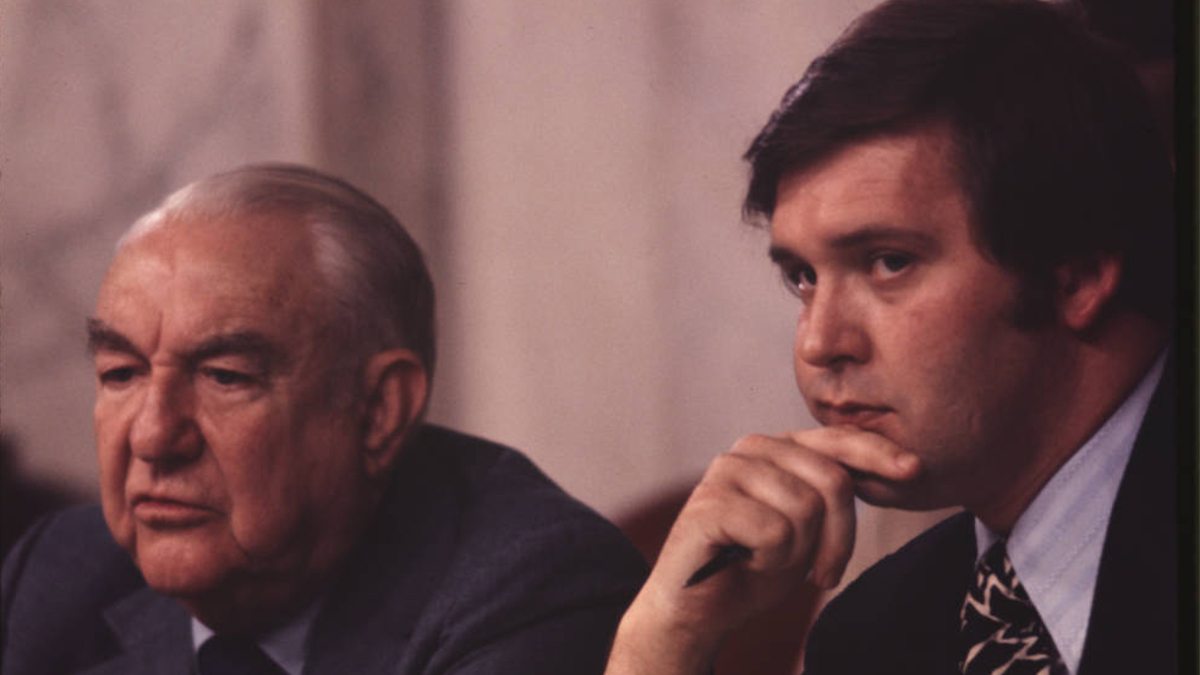Library develops all-digital Watergate exhibit
The collection preserves and shares historic “national treasures” drawn from papers donated by three Tar Heels.

Old enough to remember daytime TV being pre-empted for the Senate Watergate Committee hearings? Or young enough to wonder why every scandal seems to end in “-gate”?
The University Libraries’ new digital-only exhibition, “A Southern View of Watergate: Tar Heels’ Impact on a Nationwide Scandal,” appeals to both. It provides a valuable record of events from the 1970s and a resource for today’s discussion about presidential immunity.
The digitized collection became available online March 1. On that day 50 years ago, a grand jury indicted seven aides and advisers to then-President Richard Nixon and named the president as an unindicted co-conspirator. The exhibit spotlights key documents that all came to be housed in the Southern Historical Collection at UNC-Chapel Hill’s Wilson Library: two Nixon subpoenas, Nixon’s written refusal to comply and a copy of the president’s infamous “enemies list.”
Many point to the Watergate scandal as the beginning of American distrust in public institutions. That makes the preservation of artifacts related to the scandal particularly relevant.
“Archivists are always there in the background saying primary sources are how we’re going to get at the truth,” said Biff Hollingsworth, collecting and outreach archivist for the Southern Historical Collection at Wilson Library.
The Watergate scandal began with the 1972 break-in at the Democratic National Committee headquarters in the Watergate Office Building. The burglary’s coverup by the Nixon administration led to a Senate investigation and charges of obstruction of justice. With impeachment looming in 1974, Nixon became the only U.S. president to resign from office.
Over the years, UNC-Chapel Hill acquired what Hollingsworth called several “national treasures” related to the scandal. They were among the papers donated by Tar Heels who were also key Watergate investigation figures, Sen. Sam Ervin ’17, chair of the Watergate Committee, and Rufus Edmisten ’63, Ervin’s deputy chief counsel. The archive also includes the personal diary of the hearings and other papers from journalist and author Jim Reston ’63, whose book “The Conviction of Richard Nixon” was the basis of the play and movie “Frost/Nixon.”
“We felt like we were somehow accruing a little bit of a southern Watergate archive,” Hollingsworth said.
The digital-only exhibition brings together for the first time these rare items that have been digitized for preservation. River Zorich, graduate student in the School of Information and Library Science and graduate assistant at Wilson Library, built the exhibit, adding a timeline and supporting information for more context. There are photos from the hearings and audio clips of Edmisten’s recollections of such key moments as finding out that Nixon had a taping system in the White House and his personal delivery of Nixon’s subpoena.
Zorich knew only the basics about Watergate from a high school history class but found their dad was “super excited” to talk about the scandal that he had lived through. In building the exhibit, “I was really surprised to find out that a lot of what happened in the Watergate scandal set the tone for how records are kept for presidents going forward,” Zorich said.
The exhibit is also a way to share these national treasures, papers that grow more fragile each day, without causing them further damage.
“They are nationally important, primary sources that really are central and pivotal to the Watergate story. We felt like this was a way for us to not just digitize them and store those digital files away, but to digitize, synthesize, analyze and present them through this project,” Hollingsworth said. “This is the way that we hope folks will approach them. We have made them more accessible while we’re preserving them.”







